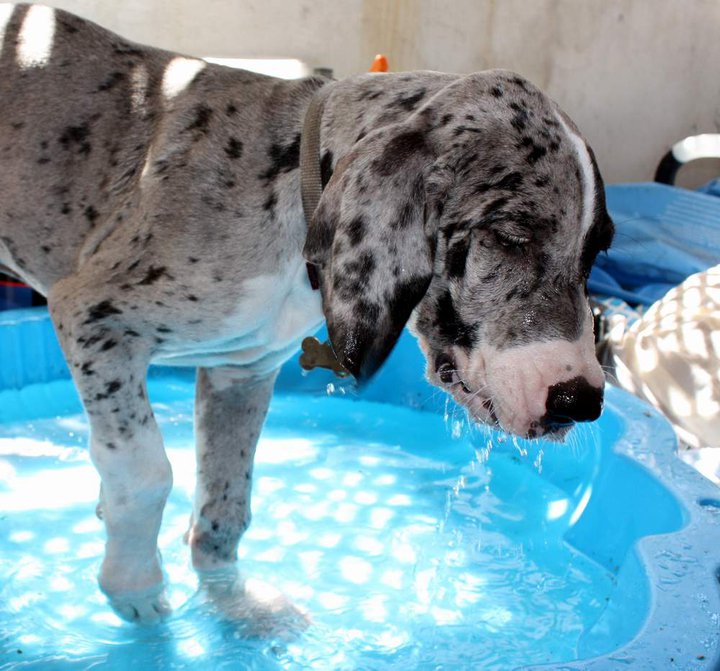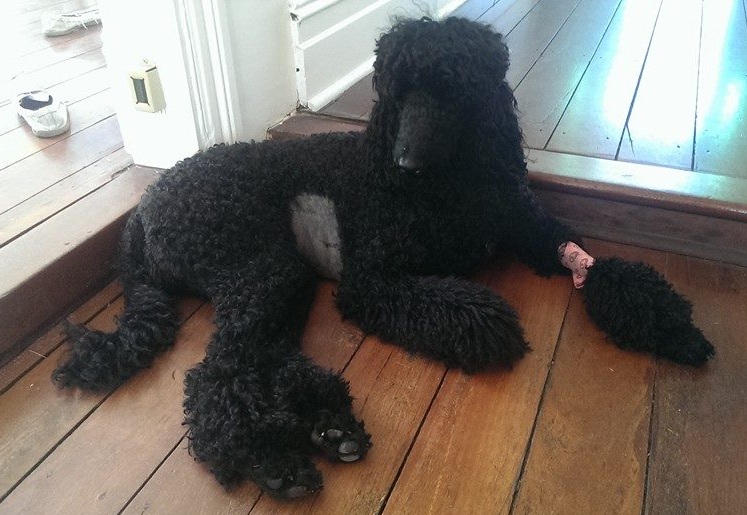If you’re in Perth, you’ve probably noticed that it’s HOT. And unless they get to be inside all the time with the air con on, your pets have probably also noticed it. Here are a few tips to keep in mind so that your pets stay cool and safe this summer:
- Obviously you don’t want to walk your dog in the middle of the day in hot weather, but even once the freo doctor is in and the air is cooler, the ground might still be really hot. If you’re wearing shoes, you might not even be aware that your dog’s pads are burning and blistering. Periodically reach down and check the pavement, especially if it’s dark in colour, to make sure it isn’t too hot.
- Provide big water bowls even for small animals that don’t drink very much. A big water bowl isn’t just less likely to tip over or evaporate, leaving your pet with nothing to drink, but it will stay cooler for longer; a small water bowl will quickly reach room temperature or above if it’s in the sun, and nobody wants a hot drink on a 40 degree day.
- Make sure outdoor pets have shade throughout the day. There might be shade when you leave the house in the morning, but will it still be there at lunchtime when the sun is directly overhead, or in the afternoon when the sun is to the west?
- And for indoor pets, make sure you know how hot the house gets when you’re not home with the air con or fans on; make sure all windows and blinds are closed during the day, and if possible leave the air con on a timer or thermostat so it will stop the house getting dangerously hot.
- Small animals like rabbits, mice, rats, and guinea pigs love to have frozen water bottles to lean up against on hot days. Especially if they are in small cages with limited air flow.
- Fish tanks can be kept cooler by running a fan over the surface of the water, increasing evaporation which cools the water just like when you get out of the pool and stand in a nice breeze. Warm water is dangerous to fish because it holds less oxygen, causing them to suffocate.
- Fleas and flies get bad at this time of year so make sure your pets are up to date on their parasite treatments. You can get once-a-month spot on treatments that prevent biting flies as well as fleas, and products to spray around the yard to keep bugs away, which in combination can be much more effective than repellents alone
- Dogs love frozen treats; fill an icecream container or similar with water or stock, and add treats or toys. Give this to your dog on a hot day and they’ll have a ball playing with it and licking it, and it’ll help them stay cool.
If you can’t be there for your pet all day on hot days and you’re worried, we’d be more than happy to come by for a pet sitting visit to check they’re cool, turn the air con on for a bit, fill up the water, or have fun playing with the hose if that’s what your dog likes. We’re usually available at late notice to be called in as needed when the forecast is looking hot.
- Megan




